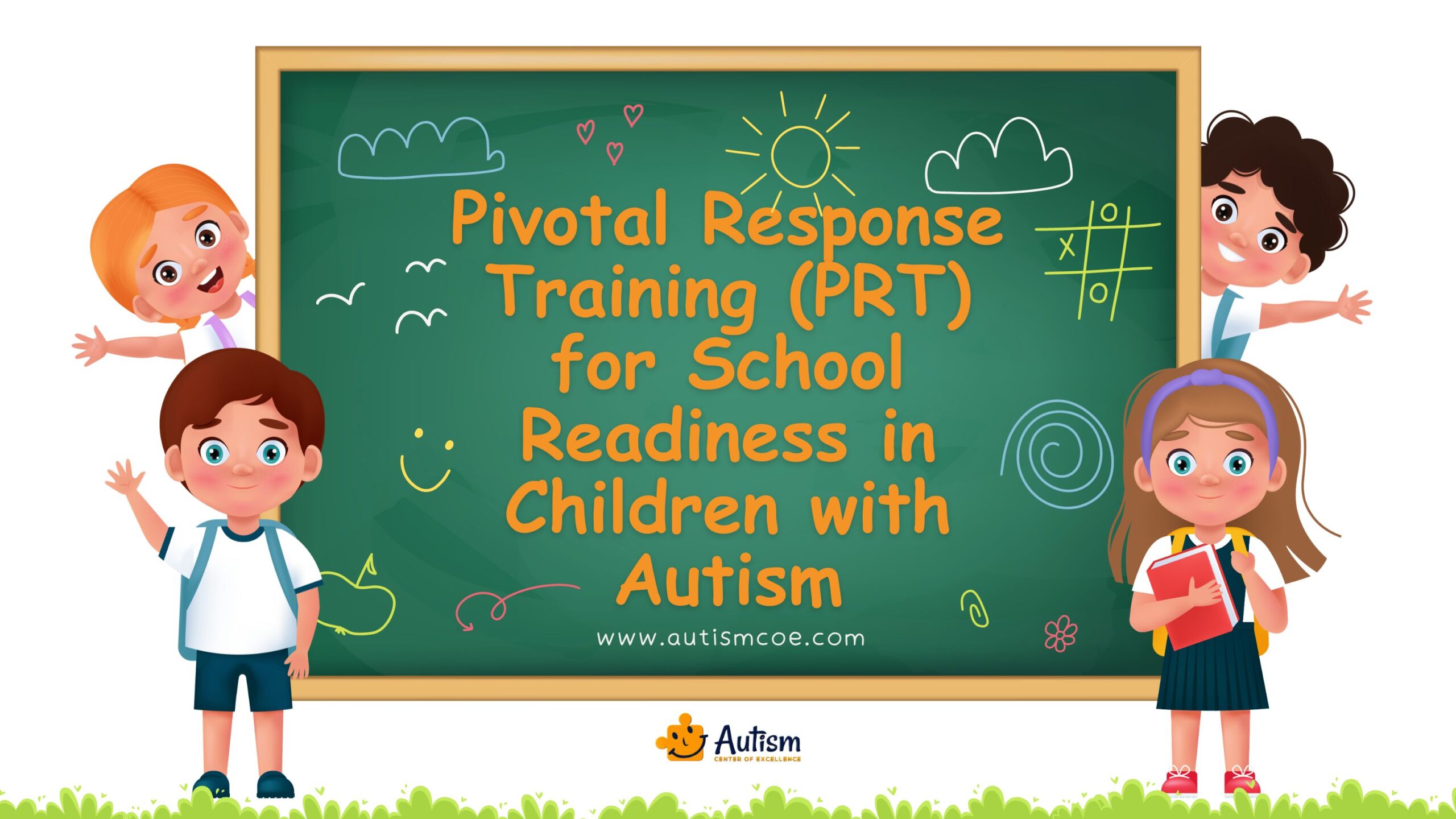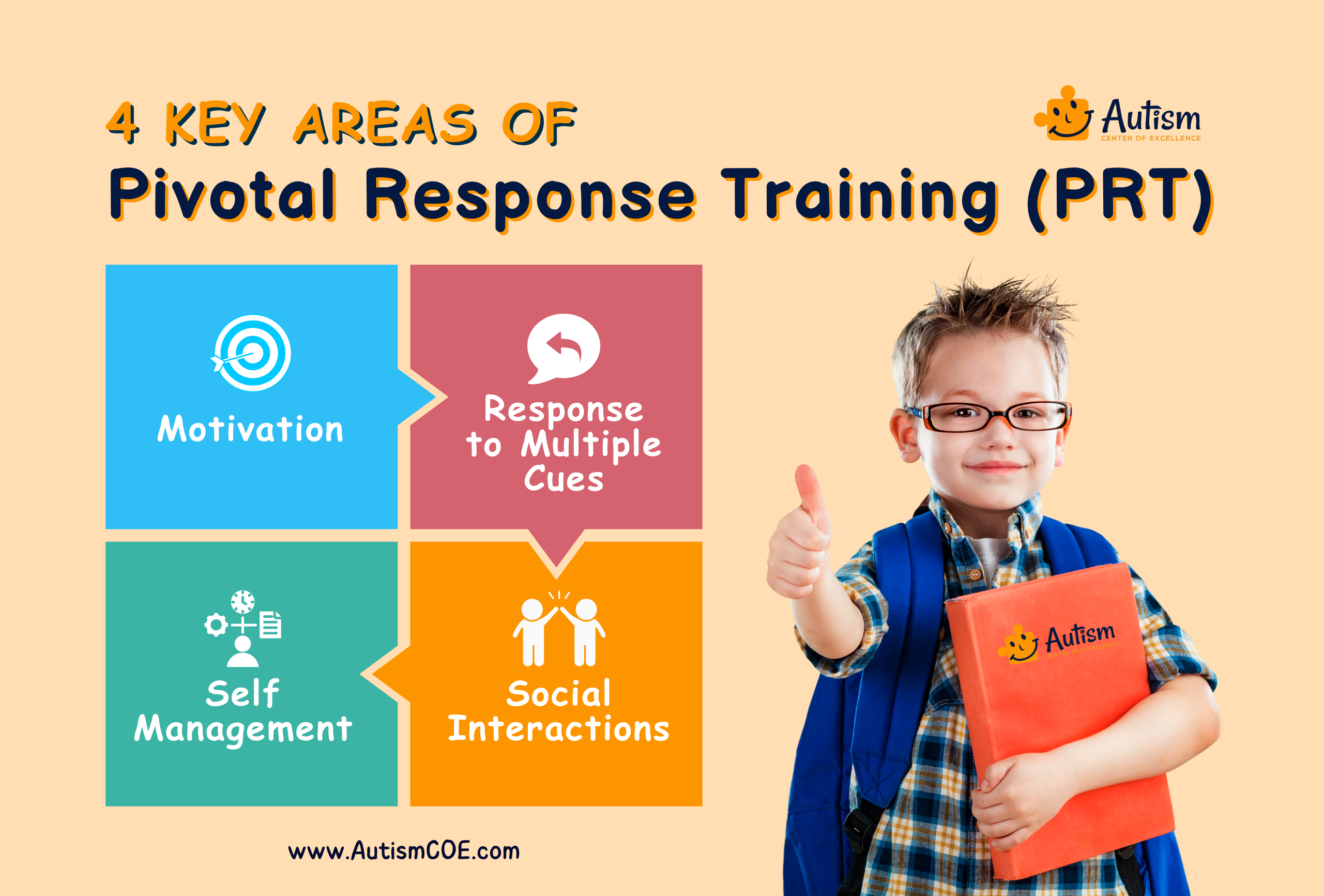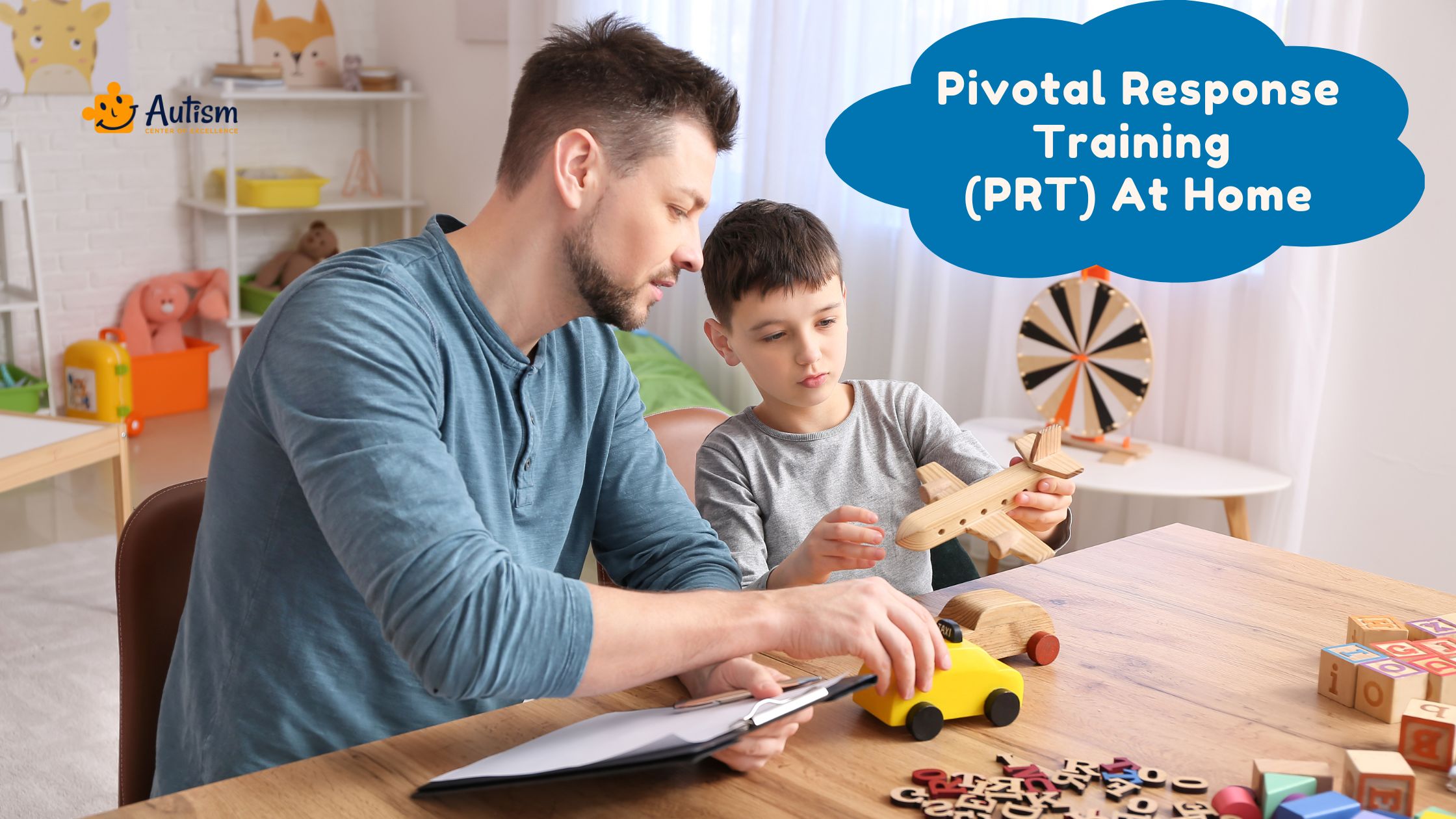Unit 28: Pivotal Response Training (PRT) for School Readiness in Children with Autism

There are a lot of issues in observing the educational platform of children with autism because it is complex and difficult. Though the inception of a learning culture needs different kinds of holistic tools and methods, at the end of the day realizing it is the mission possible task. One of those approaches that has demonstrated positive outcomes through experience is Pivotal Response Training (PRT), particularly in enhancing School Readiness for Children with Autism.
This presentative blog post aims to acquaint PRT with its advantages, the way to apply it, and its feasible application for children with autism, particularly in schools, before they get there.
What is Pivotal Response Training (PRT)?
Pivotal Response Training is a Behavioral Intervention model derived from the principles of Applied Behavior Analysis (ABA). It focuses on developing key areas of a child’s growth, including communication, social skills, and behavioral responses. Unlike traditional ABA techniques that may focus on discrete trials, PRT targets “pivotal” areas of a child’s development, aiming to produce broad improvements across other social, communicative, and behavioral domains.
History of Pivotal Response Training
The concept was invented by two American doctors in the 1970s. Originally started by Robert and Lynn Koegel, PRT has expanded and adapted to the changing education landscape. It was initially called the Natural Language Paradigm because it relied on the use of naturalistic moments. The method has developed further and has been tailored to individuals, which is now a part of systematic treatment models for people with autism.
What is the Age Range for Pivotal Response Training?
PRT is most effective for kids in their age group ranging from 2 and 6 years. Nevertheless, some generalizations of its principles appear to apply to all age groups so this approach can be considered as a remarkable one.

What are the Key Areas in ABA Pivotal Response Training?
PRT focuses on four pivotal areas that are believed to be crucial for overall child development and school readiness:
Motivation
It makes the individual eager to interact and discover with thinking about the things he/she internalizes and externalizes in his study process.
Response to Multiple Cues
Through the training, individuals react to a range of physical and social signals, thereby increasing adaptability and all-around awareness.
Self-Management
Facilitates individuals in being themselves by making their own choices of actions and behaviors, which in turn creates a free thinker and self-reliant individual.
Social Interactions
Narrow aids in the Development of Effective Communication, the ability to cope with social anxiety, friendships, and support systems which are important for social integration and interaction.
Since PRT puts emphasis on the basic needs to fully develop and nourish the child’s mind, our goal is to alter the behavior towards holistic development and generalization across various areas which are typical of autism.
Who Provides PRT?
Properly trained educators, such as special education instructors, ABA Therapists, or psychologists, can follow PRT methods properly as they have spent the required time and effort to learn the specialized techniques. This is primarily the responsibility of the experts who work closely with the family to provide the necessary information and support in order to ensure that the application of the PRT strategies remains consistent throughout the different contexts.
Thus, this level of partnership ensures an individualized plan that takes into account the specific needs of each student; the approach creates an intimate intervention that can vastly improve the academic and psychological development of the youth.
Benefits of PRT for Children with Autism
The PRT manifests that the social and communicative abilities of children become better, and the positive behavior shapes up more for the School Readiness of Children with Autism Spectrum Disorder. Some specific advantages of PRT include:
Naturalistic Teaching Approach
Through the application of routine activities, PRT leads to the discovery of an environment that resembles a real-life environment that is more meaningful and relevant to a child’s life.
Personalized Interventions
PRT uses an approach, which is individualized, targeting the children’s key interests and improving their motivation.
Transferability
Skills acquired through PRT can be used at home, even in school activities, as well as at work or any other setting just outside the hospital.

Techniques and Strategies of Pivotal Response Training in School Settings
Implementing Pivotal Response Training (PRT) in School Settings: A detailed manual
Child-Choice Learning
- This implies encouraging the students to be in charge of their learning process while they pick their own learning activities, giving them more freedom and control over their educational path.
- It creates and maintains a high level of engagement and motivation by reacting to the child’s personal interests, which in return leads to far deeper understanding and better learning.
Task Variation
- A more appealing learning atmosphere can be fostered through the use of a varied mixture of tasks during the training sessions, making them more exciting and interesting.
- It is effective because it prevents boredom and ensures that learners are constantly keen and motivated, making each session exciting and new.
Reinforcing Attempts
- This strategy involves recognizing and rewarding the effort and movement that a student shows, rather than the full knowledge of the answer, thus making room for learning and friendship.
- It produces children by doing trial and error instead of the fear of failure. Children love this atmosphere and they develop the habit of hard work and a positive attitude.
Direct and Natural Reinforcements
- Probes the immediate and relevant prizes that would refer quite correctly to the tasks at hand, only making the rewards more indispensable.
- This method is certainly effective in achieving the stated objective of making the learners see the relationship between behavior and the consequences, thus bringing a change in the way they study, which is to make the process both intuitive and rewarding.
These strategies are not simply crucial for the effective education of children with autism but also hugely useful in reducing stress and anxiety among children with autism which would in turn create a more wholesome classroom learning environment.
Does Insurance Cover Pivotal Response Training?
Coverage of Pivotal Response Treatment (PRT) may vary greatly from one Insurance Policy to another. Of course, in many cases insurance companies in place that already include ABA Therapy will most probably give you such therapy coverage too, taking into account the fact that PRT is based on ABA principles.
Consequently, it’s important for the parent or guardian to call the insurance company and ask about the details of the plan. This requires one to be aware of what sort of therapy is remunerated, the level of coverage, and any limitations or conditions. Thus, it cannot be overemphasized for parents to be well-informed so that they may have insight into their children’s treatment alterations.
Suggested: Understanding ABA Therapy Insurance: Maximizing Coverage for Autism Treatment

How to Do Pivotal Response Training at Home?
Because of its multifunctionality, PRT can be seamlessly incorporated into regular activities at home that will therefore become stormproof for parents and caregivers. Some tips for incorporating PRT at home include:
➡️ Selecting practicable opportunities that the child will like.
➡️ Goals that are specific for each aspect of the activity.
➡️ Being very visual, applying Visual Supports to communication and teaching.
➡️ Offering encouragement for the desired behaviors, or maybe some attempt toward them.
The household setting of PRT induces the development of task-centered education, with the emphasis placed on the realistic and entertaining setting. Parents/caregivers can use that pivotal response training if they use manuals and examples to show them what activity to choose. Coherency and collaboration are the keys to trained counselors.
Join Our Weekly Newsletters!
Subscribe now to stay updated with our latest email updates.
Is There Any Disadvantage of PRT?
While Pivotal Response Treatment (PRT) has shown to be better suited, in many cases, to the needs of Children with Autism Spectrum Disorder, it may not be appropriate for all. These differences illustrate the point that each case is unique and show the importance of considering an individual’s responses to different treatment modalities.
The diversity of these differences evidently underlines the significant need for personalized interventions that are designed in accordance with the nature of a particular child. This approach makes it possible to avoid the risk of the implemented methods not having the desired effect because they are unlikely to fit the specific traits and problems of each individual child.
Frequently Asked Questions & Answer
What Does Pivotal Mean in ABA?
For the ABA program, “Pivotal” is a significant behavioral change that, when improved, can create a positive ripple effect across many other areas of development skills. Providing for these critical areas eases the avenues to developmental advance.
How is Pivotal Response Training Different from ABA?
PRT is a subset of ABA, and it aims to work towards pivotal areas of development, not singular skills. PRT embodies greater freedom and naturalism, giving children the chance to participate in guidance rather than being a passive receiver of a therapist’s lead, unlike traditional ABA which is more structured and therapist-oriented.
Who Benefits from Pivotal Response Training?
Children with autism spectrum disorder (ASD) are the primary beneficiaries of PRT. It has been found that the intervention has been useful in developing the areas of communication, social skills, and overall behavior making these children able to reach greater development outcomes.
What are the Goals of PRT ABA?
- Develop play skills.
- Enhance communication and language skills.
- Increase positive social interactions.
- Reduce disruptive or challenging behaviors.
- Foster self-management and independence.
- Encourage motivation and interest in learning.
- Improve academic engagement and learning.
Conclusion
Pivotal Response Training is a game-changing educational model that contributes positively to children’s development by ensuring that they are ready for school to increase their general skills. By concentrating on the main aspects of child development, the PRT strives to accomplish big changes that contribute to the children’s ability to learn and interact with the environment. It is either home-based or School-Based Programs that PRT is referred to as a foundation of continuous improvement and adaptation that is carried out for a lifetime.
Embracing PRT as a form of Treatment for Autism can be a lifechanger for parents, educators, and therapists, not only for the child but also for the caring adults. It is proof of the power of designed, empathic, and evidence-based intervention that releases the potential in every child.
Please Note: The content of this blog is for informational purposes only and should not be considered a substitute for professional medical advice, diagnosis, or treatment. Consult a qualified healthcare professional for personalized guidance tailored to your specific situation.

Bhavika Bhasin
Bhavika Bhasin is the Research and Marketing officer at AutismCOE. She works with children and adults with ASD. Her clinical research includes evaluating various available autism screening and diagnosis methods and their efficacy. She is currently developing a novel screening exam that is indicated to be more accurate than the existing available exams. She is also writes articles papers for various publications.

